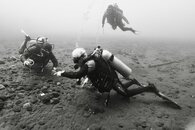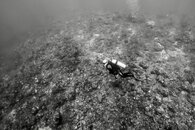Define failure.
SPG/transmitter showing wrong pressure?
Lost connection?
Transmitter battery suddenly dying during a dive?
Flooded transmitter or SPG?
Tiny bubble leaks around SPG swivels?
Catastrophic gas loss?
Or human error such as mismatched transmitters in your computer if you dive more than one cylinder + transmitter?
In my mind, failure is anything that renders the device giving inaccurate information (or no information) for more than 1 minute.
In reality, however, failure would be defined by whomever is compiling the report. What I'm looking for is objective information on the rates of transmitter or SPG failure per dive or time used, rather than people's anecdotal reports. I realize that such data probably doesn't exist for several reasons:
1. It takes a lot of work to compile.
2. There's not a lot (if any) incentive for a manufacture to gather the data and publish it.
3. In the US, there's not an overall scuba agency (like the National Highway Traffic Safety Administration) which complies and publishes data from actual scuba diving events. The BASC report only lists numbers of incidents based on equipment problems but doesn't further clarify what the problem was.
4. The scuba market is too small for Consumer Reports or other similar testing organizations to objectively test failure rates by hooking up SPGs and transmitters to tanks, having a machine breathe through the regulator, then seeing how many failures occur per XXX/hours of use (like is sometimes done with light bulbs, appliances, etc.)









